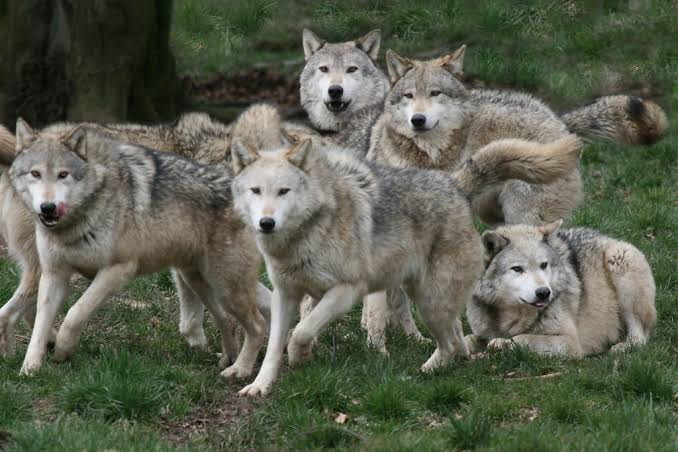There are canines all over the world from wild and stray to tame and playful, but up in the snowy forests and mountains of North America Asia and Europe lives a silent pack hunter that pushes it to the extreme.The Grey wolf.

The Grey wolf is the largest species of wolf on the planet. This massive wolf wights 16 to 60 kilograms and can be from 100-150cm long. They are also well known for the ability to hunt in packs and their distinctive howl. These large carnivores live up in the cold mountains and forests of North America Asia and Europe were bad wether and temperatures are cold in the extreme and feed on Moose, caribou, rabbits and occasionally they will eat plant matter.

The grey wolf s appearance dates back to the ice age with the Dire wolf 10,000 years ago and the Eucyon 8m years ago. These Canines have been built over time with thick coats good senses like eyesight and smell, strong claws and legs and pander paws. The Grey wolf comes in white grey brown or black.

All these are structural adaptations to help them in their environment and to survive.
The Thick fur is to protect them from the wind and bad wether while with large claws and teeth it has no trouble killing large pray. These large wolves have strong legs and padded paws for going over rough terrain.

Another type of adaptation is the Behavioural adaptations. These are adaptations that they chose to use to survive. Grey wolves have many. They hunt in packs to catch their pray buy sneaking up herding and chasing. The leader of the pack is the Alpha. The big bulky male the rules over the pack followed by the alpha female the mate of the Alph male. Then the Beta wolves who are second in command, the rest of the pack then then the Omega witch is the runt of the pack. The pack also has 8 to 20 members.
Here are some others:
- They howl to bond and communicate
- Young wolves learn by play fighting
- If they eat a lot they won’t want again for weeks
- The grey wolf is a territorial animal

The last and more complicated adaptations are Physiological adaptation witch are adaptation on the inside of the animal like blood or bones. Most of a grey wolfs physiological adaptations are to do with hunting catching and killing their pray like its reflective retainer over it’s eyes gives it night vision to hunt at night. It also has a nose that can pick up smelling 100 times better than a humans. They also have warm blood to survive in the cold and eyes that are sensitive to movement and sensitive ears for hearing its pray. I also has a large belly.
I got the photos from these websites:
https://www.pinterest.com/pin/542754192563462639/
https://pixels.com/featured/gray-wolf-canis-lupus-pup-amid-lupine-tim-fitzharris.html
http://www.loe.org/shows/segments.html?programID=13-P13-00052&segmentID=1
https://www.flickr.com/photos/carisan/2366707699
I got the imfo from these places:
world book
My best book of wolves and wild dogs
Britannica
https://animals.mom.me/wolf-packs-pecking-order-3463.html